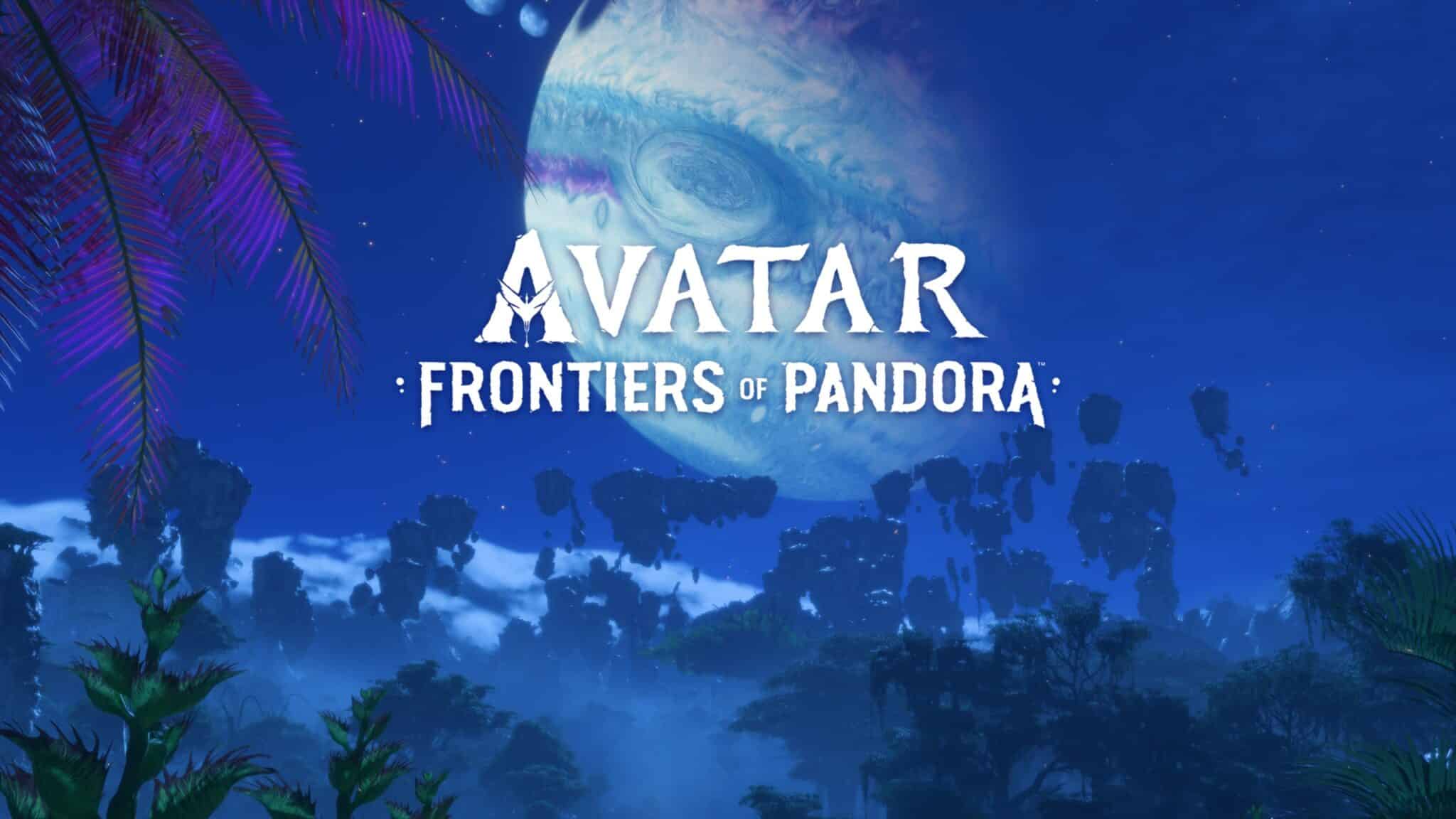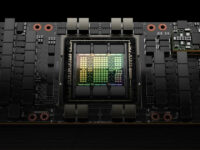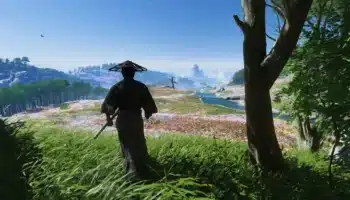Introduction
Avatar: Frontiers of Pandora is the second major video game entry in the world envisioned by James Cameron with his movie named “Avatar” back in 2009, the first being a now-delisted game from Ubisoft as well. The film was considered a breakthrough in CGI cinematography on a big screen back then, and the sequel “Avatar: The Way of Water” from 2022 is equally so. Say what you will about the actual story and direction of these movies, but the world built up by Cameron is a rich lush place with aesthetic elements to please the eyes: the world of Pandora. And this game does an incredible job of recreating that aesthetic as we’ll soon see in the review breakdown below.

We here haven’t even watched the recent Avatar movie nor are fans of the original, but that is no pre-requisite to enjoying this game apart from some easter eggs thrown in. So worry not if you have no idea or care about the Avatar movies, this game can be enjoyed as is. On the other hand, if you do like those movies, well you’ll have an even better time.
Developers Massive Entertainment, a subsidiary of Ubisoft responsible for the well-received Division series as well as the upcoming Star Wars Outlaws, have come out with their engines revving with this game in what can frankly be considered a surprise end-of-the-year drop. Under the radar till now, partly due to the marketing not being as strong for this game compared to say the Assassin’s Creed series.
Utilizing the incredible in-house Snowdrop engine with even more updates since the Division, including amazing ray tracing implementation not present in those games, this game is without a doubt one of the best-looking games of the year. (Even featuring the “Unobtanium” hidden settings which pushes the RTX 4090 down to 31 FPS and is meant to be a future-proof benchmarking setting) It also has its downsides, of course, so let’s go ahead and dive into the different elements of the game and see what makes it, what breaks it, and most importantly: Should you buy it?
Story
You play as a “Na’vi”, the native species of the planet- no wait, moon “Pandora”. (Being on the moon translates to some incredible imagery such as being able to see the giant planet you orbit in the middle of the night, which is a sight to behold)
Being enrolled in something called “The Ambassador Program” (TAP) since childhood, you’re nuanced in both the ways of the human and the Na’vi. The TAP is something that was established by the RDA (The Resources Development Administration: a fictional organization that plays the role of the antagonist in the movies as well as here), to raise young Na’vi in the human cultural sphere and train them to become RDA envoys to the various clans and communities on Pandora. This would further the RDA agenda of taking over the moon non-violently while also letting the Na’vi benefit from human advancements.
But things get sour between the humans and the Na’vi, taking on from the events of the movie, and the program starts leaning towards military and covert skills to be used in this more confrontational landscape. Years into the future, your character manages to escape from the TAP facility in a fun little tutorial section, and you become part of what’s called the “Resistance” in the Western Frontier. The Resistance’s goals are straightforward: stop the RDA from further establishing a foothold in this previously unseen part of Pandora and polluting the land, destroying the wildlife, disrupting the natural balance, et al.
Being a child of two worlds, you’re uniquely situated in being able to understand this conflict from both sides and hence using that knowledge to help end it, while simultaneously figuring out more about your traditional clan called the “Sarentu” in a journey of self-discovery.
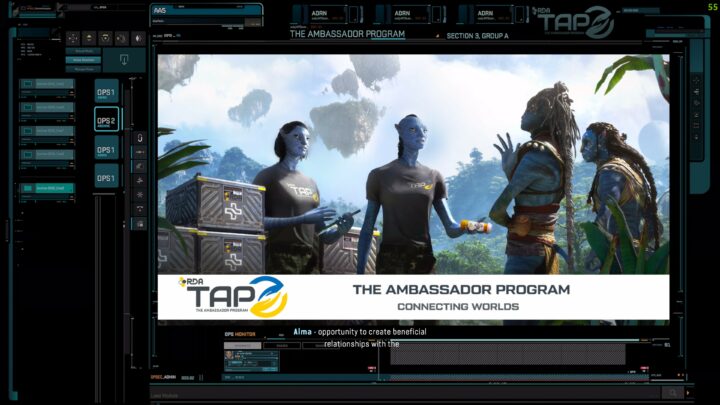
As far as the connection to the actual movies goes, there are a few easter eggs thrown in here and there for people familiar with the movies to notice, but nothing you need to know as a pre-requisite before getting into this game as mentioned in the intro. In terms of the timeline, this game canonically takes place alongside the movies, but on a different continent of Pandora, and is set in the year 2169 (a year before the main events of Avatar: The Way of Water).
All of this is a nice roundabout way to set you up, the player character, against some good hordes of video game enemies to take down, the RDA. And it works out pretty well for the most part.
Gameplay Elements and UI
Let’s get into the meat of the game, its gameplay. Right from when it was revealed that this game was a Ubisoft undertaking, online opinions were flooded with memes of “Far Cry but as Na’vi”, poking fun at the often repetitive open-world formula that Ubisoft games have come to be infamously known for. So does it stand up to those memes, is this another “Ubisoft open-world game”? Thankfully, not really. The game design has a lot of elements worth appreciating and a lot of player control over various aspects to tweak to one’s satisfaction. And the gameplay honestly feels closer to something like Crysis than Far Cry, for reasons we’ll see below.
But before we get into the gameplay, we gotta talk menu and UI. This game features some of the best in-game benchmarks seen in any recent game, with lots of details helping pinpoint the cause of any dropped frames and a neat little timer showing how long is left in the test run.
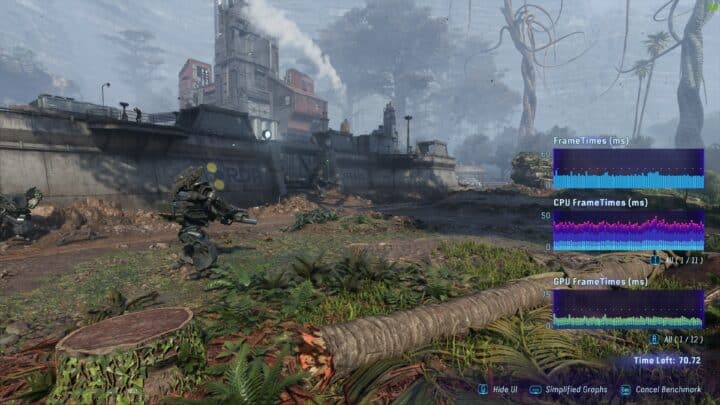
All the menu options have nice indicators below each option showing where we are between the minimum and the maximum, so you don’t have to guess if there’s hidden stuff beyond. The graphics settings especially deserve praise for showing the impact of every setting on the game, with a little visual and text description explaining each setting and also a VRAM usage indicator. Kudos to Massive Entertainment on this.
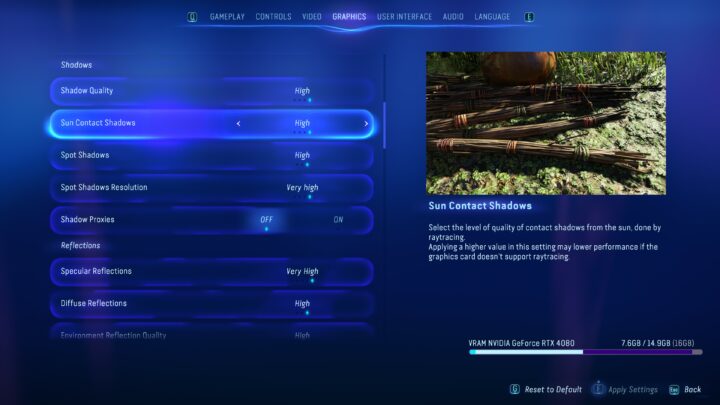
As for the UI, the game by default has a much more “organic” feeling design than other Ubisoft titles. For example, instead of an obtrusive diamond on the screen constantly showing you where to go, you need to use what’s called the “Na’vi senses” (similar to Eagle Vision or Witcher senses) and the objective shows up as a glowing pillar. For players who want even more immersion, the game features an “exploration” mode setting, where even the compass and these other UI elements are kept off and you need to rely on the environmental hints and clues to find your way around. And in a game like Avatar with an incredibly well-crafted world, this is a very fun way to add immersion to the gameplay if you like.
Not everything is perfect in the world of UI here though. One notable issue on PC is having to hold too many buttons at the same time to get to certain menus. For example, if you want to access a particular food item, you need to hold “Q” to open the quick menu, then press “T” to switch to the food menu and then navigate to the food item with your mouse, and THEN hold “F” to consume this food. If you’re already running and using the WASD and shift keys, this results in almost 4 simultaneous button hold just to consume some food. This issue is noticeably less offensive on a controller and it seems designed around one.
This is but a minor nitpick in otherwise generally very well-thought-out and immersive UI, embracing the aesthetic of the Avatar world.
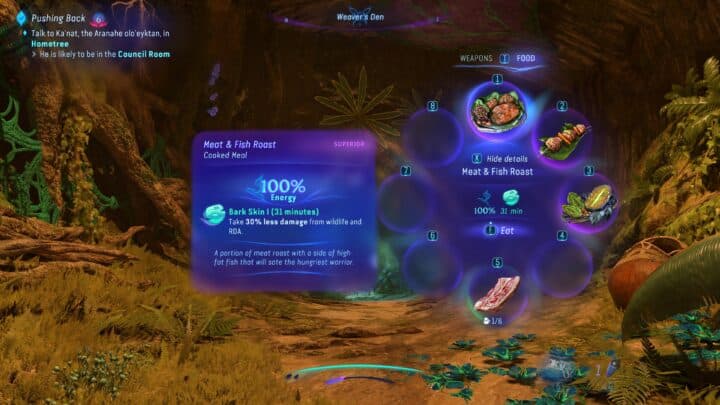
A bunch of neat accessibility options are also tucked away in the menus. There are options for aim assist, to turn off or lower the difficulty of certain minigames (such as a hacking one where you need to direct a dot across a maze to the end, or harvesting where you need to figure out the optimal angle to pull at the resource and more), the aforementioned quest guidance level, combat levels, colored and detailed subtitle options, tinnitus effect reduction and more.
Coming to the actual gameplay, traversal is a significant part of this game. As a consequence, there are a myriad of different skills that can be gained to achieve this. The parkour levels don’t reach that of Dying Light but have just enough added in to make it fun. To start, the jump is not just a fixed tap of the button, but one that varies the distance jumped based on how long it is pressed. There’s also an ability to “double jump”air dash” (double jump) in the air and sprinting helps further the distance jumped. The player can also dash sideways with the tap of the jump and the strafe keys. This helps dodge enemies during encounters in the forests of Pandora.
There is a lot of verticality in the game and environmental features help complement this. Bouncy mushroom pads and leafy launch pads can throw you up into the air, large leaves can help slow down your fall, lift vines can help go up or down and you can make your way across some tree branches to stay hidden from the wildlife or enemies.
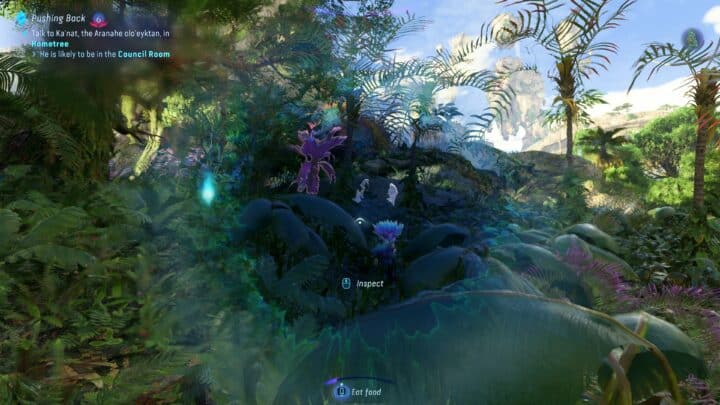
You get access to something called the “Na’vi Senses” early on in the game, which is Eagle Vision or Witcher Senses and a norm in today’s games. However, it is executed pretty well, with any interactive objects showing up as a glow. Each object can be inspected further with a click, adding it to the “Hunter’s Guide” which we’ll talk about below, basically detailing every aspect of the object from its weaknesses to abilities. It can also be used to track down scents of any fauna or enemies around the world.
The health system used here is also intuitive, similar to something like Red Dead Redemption 2, where there is a separate “Energy” bar below the “Health” bar. The higher the energy bar, the more quickly your health regenerates. This meter can be filled by consuming raw or cooked food items, and cooking is an absolute delight in this game as we’ll discuss soon. As expected, cooked items grant better energy levels and also added buffs for a time duration determined by the ingredients.
In cases of a pinch or during combat, the Health bar can be instantly replenished using dedicated med kits or things called “Dapophets” which are used by the Na’vi to heal and can be gathered from Dapophet plants. During exploration, you can also come across special plants called “Bellsprigs” which permanently increase the maximum health by a small amount when touched and are hence valuable exploration points of interest to find.
